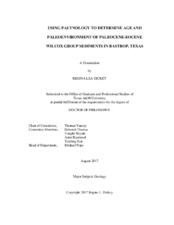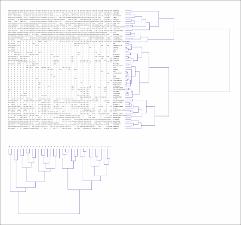| dc.description.abstract | The Wilcox Group is an important group of sediments derived primarily from the Laramide orogeny in the western United States. It is important for paleoclimatological and paleoenvironmental studies, as it was deposited during the time of the Paleocene-Eocene Thermal Maximum (PETM), a time of rapid global increase in temperature. Wilcox Group sediments extend from central Texas into the deepwater Gulf of Mexico, but correlating these sediments is extremely difficult due to increased basinward faulting and sparse fossil content. The lack of macrofossils exists because sedimentation rates were high and large amounts of plant material were deposited, resulting in the destruction of calcareous fossils due to production of acids from decaying plant material. Thus, palynology remains the key to understanding these deposits.
Palynological sampling within shoaling-upward regressive deposits in the upper Calvert Bluff Fm at Red Bluff and overlying transgressive deposits of the Carrizo Fm, exposed beside the Colorado River near Bastrop, Texas, reveals a rich assemblage of well-preserved palynomorphs. This section contains an unconformity possibly equivalent to the sequence boundary between the Middle Wilcox and Upper Wilcox of the subsurface and previously thought to coincide with the Paleocene Eocene Thermal Maximum. Prior palynological work has placed the age of the upper Calvert Bluff near Bastrop in the late Paleocene, but this study has shown that these sediments are probably Eocene, with the P/E boundary subsurface to the outcrops. Therefore, the palynomorphs present here would potentially record a response in flora during and after the PETM. My research utilizes palynology to refine the age of the sediments and produce a detailed palynological framework around the P/E boundary for this particular Wilcox interval, lending to a better understanding of the effects of the PETM along the western U.S. Gulf Coast. | en |



